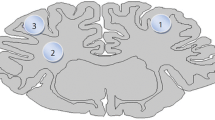Abstract
Brain tumors are one of the main worldwide causes of mortality and morbidity and a critical issue in health risk. Tumor growth prediction is a proper method for better understanding the phenomena and choosing the appropriate therapy for patients. Since tumors’ physiological and morphological properties vary significantly in different individuals, using patient specific data is valuable for modelling tumor growth in staging and personalized-therapy planning. However, the validity of the models should be evaluated for their precision assessment based on the decision criteria. There are different sources of uncertainties affecting model prediction accuracy and decision making for the therapy. In this paper, an image-based tumor growth model is evaluated by taking into account uncertainties in the model parameters. The proposed reaction–diffusion model integrates cancerous cell proliferation and invasion through reaction and diffusion terms, respectively. Uncertainties in diffusion and proliferation coefficients were analyzed through Monte Carlo simulation. The time needed for tumor to grow to its fatal size was estimated through numerical solution of the model. Comparison of the predicted time distribution with and without considering uncertainties in model parameters shows a decrease in dispersity of predicted data that highlights the importance of uncertainty. Also, the wide range for survival time shows the importance of choosing proper parameters in order to enhance model accuracy. The recommendations were made for increasing the validity of the tumor growth models.





Similar content being viewed by others
References
Bailer AJ, Noble RB, Wheeler MW (2005) Model uncertainty and risk estimation for experimental studies of quantal responses. Risk Anal 25(2):291–299
Barth T (2005) A brief overview of uncertainty quantification and error estimation in numerical simulation. Syst Dir, NASA Ames Res Cent : 1–19. http://www.stanford.edu/group/cits/pdf/lectures/barth.pdf
Boyer AL, Schultheiss T (1988) Effects of dosimetric and clinical uncertainty on complication-free local tumor control. Radiother Oncol 11(1):65–71
Chakrabarty SP, Hanson FB (2005) Optimal control of drug delivery to brain tumors for a test of PDE driven models using the galerkin finite element method. Proceedings of the 44th IEEE conference on decision and control 1(2)
Everitt BS (2002) The cambridge dictionary of statistics, 2nd edn. Cambridge University Press, Cambridge
Ferreira SC, Martins ML, Vilela MJ (2002) Reaction–Diffusion model for the growth of avascular tumor. Phys Rev E Stat, Nonlinear, Soft Matter Phys 65(2):1–12
Gehlot V, Sloane EB (2006) Ensuring patient safety in wireless medical device networks. IEEE Comput Soc 4(39):54–60
George EI, Clyde M (2004) Model uncertainty. Encyclopedia of Environmetrics in 2002 and 2012 (Second Edition) 19(1):81–94
Giese A, Bjerkvig R, Berens ME, Westphal M (2003) Cost of migration: invasion of malignant gliomas and implications for treatment. J Clin Oncol 21(8):1624–1636
Grigoryan G, Rheingans P (2004) Point-based probabilistic surfaces to show surface uncertainty. IEEE Trans Vis Comput Graph 10(5):564–573
Gruywagen GC et al (1995) The modelling of diffusive tumors. J Biol System 3(4):937–945
Guba A, Makai M, Pál L (2003) Statistical aspects of best estimate method—I. Reliab Eng Syst Saf 80(3):217–232
Han P (2011) Varieties of uncertainty in health care: a conceptual taxonomy. Med Decis Mak 31(6):828–838
Hawkins-Daarud A, Prudhomme S, van der Zee KG, Oden JT (2013) Bayesian calibration, validation, and uncertainty quantification of diffuse interface models of tumor growth. J Math Biol 67(6–7):1457–1485
Lin GG-H, Scott JG (2012) NIH Public Access. 100(2): 130–34
Massey Jr, Frank J (1951) The Kolmogorov–Smirnov test for goodness of fit. J Am Stat Assoc 46(253):68–78
Modarres M (2006) Risk analysis in engineering: techniques, tools and trends M Modarres (ed) CRC pTaylor and Francis, U.S.A
Hoseyni SM, Pourgol-Mohammad M (2016) Model uncertainty in severe accident calculations: a structural methodology with application to LOFT LP-FP-2 experiment. Nucl Technol 193(3):341–363
Murray JD (2003) Mathematical biology II spatial models and biomedical applications, 3rd edn. Springer–Verlag, New York
Pourgol-mohamad M, Mosleh A, Modarres M (2010) Methodology for the use of experimental data to enhance model output uncertainty assessment in thermal hydraulics codes. Reliab Eng Syst Saf 95(2):77–86. doi:10.1016/j.ress.2009.08.003
Pourgol-Mohamad M, Mosleh A, Modarres M (2011) Structured treatment of model uncertainty in complex thermal–hydraulics codes: technical challenges, prospective and characterization. Nucl Eng Des 241(1):285–295. doi:10.1016/j.nucengdes.2010.10.035
Pourgol-Mohammad M (2009) Thermal–hydraulics system codes uncertainty assessment: a review of the methodologies. Ann Nucl Energy 36(11–12):1774–1786. doi:10.1016/j.anucene.2009.08.018
Pourgol-mohammad M (2013) Uncertainty propagation in complex codes calculations. In ICONE21: 1–9
Scholz FW, Stephens. MA (1987) K-sample Anderson–Darling tests. J Am Stat Assoc 82(399):918–924
Silbergeld DL, Rostomily RC, Alvord EC (1991) The Cause of death in patients with glioblastoma is multifactorial:–clinical factors and autopsy findings in 117 cases of supratentorial glioblastoma in adults. J Neurooncol 10(2):179–185
Swanson KR, Alvord EC, Murray JD (2002) Virtual brain tumours (gliomas) enhance the reality of medical imaging and highlight inadequacies of current therapy. Br J Cancer 86(1):14–18
Tobergte DR, Curtis S (2013) Project level factors affecting quality of constructions projects. J Chem Inf Model 53(9):1689–1699
Trapp S, Horobin RW (2005) A predictive model for the selective accumulation of chemicals in tumor cells. Eur Biophys J 34(7):959–966
Wang CH et al (2009) Prognostic significance of growth kinetics in newly diagnosed glioblastomas revealed by combining serial imaging with a novel biomathematical model. Cancer Res 69(23):9133–9140
Wong Ken CL, Summers Ronald M, Kebebew Electron, Yao Jianhua (2015) Tumor growth prediction with Reaction-Diffusion and hyperelastic biomechanical model by physiological data fusion. Med Image Anal 25(1):1–14
Acknowledgements
The authors would like to express their appreciations for the valuable comments by two anonymous reviewers. The paper was significantly improved by revising the paper based on their comments.
Author information
Authors and Affiliations
Corresponding author
Rights and permissions
About this article
Cite this article
Meghdadi, N., Niroomand-Oscuii, H., Soltani, M. et al. Brain tumor growth simulation: model validation through uncertainty quantification. Int J Syst Assur Eng Manag 8, 655–662 (2017). https://doi.org/10.1007/s13198-017-0577-9
Received:
Revised:
Published:
Issue Date:
DOI: https://doi.org/10.1007/s13198-017-0577-9




